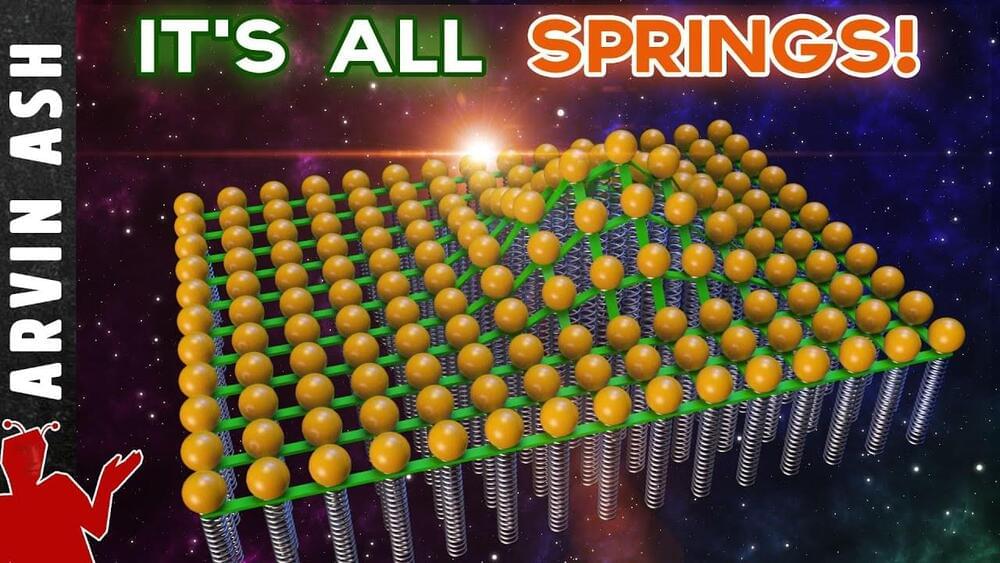Feb 3, 2023
Four new bonds to one carbon atom, in a single step
Posted by Dan Breeden in category: particle physics
Accidental discovery shows that N-heterocyclic carbenes can act as sources of atomic carbon.
Accidental discovery shows that N-heterocyclic carbenes can act as sources of atomic carbon.
When molecules form from many atoms, the atoms can combine in different ways. Two forms of the same molecule can have the same composition but have different arrangements of atoms, giving rise to isomers. Some isomers may have structures that are mirror images of each other. Such molecules are called chiral molecules. Scientists are interested in studying such molecules, for example, penicillin, because one arrangement can be a lifesaver while the other could be fatal!
Researchers shine extremely short pulses of light on molecules to take their videos during the processes of interest so that they can study the structure or formation of the molecule. The pulses are so short that they are measured in attoseconds. An attosecond is a billionth of a billionth of a second.
The light needs to be what is called circularly polarised to study chiral molecules. Different arrangements of a chiral molecule respond differently to circularly polarised light, making it possible to distinguish each arrangement. Though polarised attosecond pulses are a great tool for studying chiral molecules, generating such light pulses can be daunting, expensive, and needs bulky apparatus.
The strong force holds our atoms together. Scientists may have observed its small-scale fluctuations for the first time.

Sponsor: AG1, The nutritional drink I’m taking for energy and mental focus. Tap this link to get a year’s supply of immune-supporting vitamin D3-K2 & 5 travel packs FREE with your first order: https://www.athleticgreens.com/arvinash.
Science Asylum video on Schrodinger Equation:
Continue reading “Everything — Yes, Everything — is a SPRING! (Pretty much)” »
Only by knowing the average number of friends each person has, scientists at Complexity Science Hub (CSH) were able to predict the group sizes of people in a computer game. For this purpose, they modeled the formation of social groups on an example from physics, namely the self-organization of particles with spin.
Sociologists have focused on how social groups are forming and the mechanism behind it for a long time. The urge to avoid stress, as well as homophily—the tendency of people to join groups with others who share similar features, traits, or opinions—have been observed in many different contexts.
“Although multiple models have been studied, little is known about how homophily and stress avoidance affect the formation of human groups, and in particular the size distribution of them—whether there are many small groups or few large ones, for example,” explains Jan Korbel from CSH and first author of the study. By using two contemporary fields from physics, called self-assembly and spin glasses, scientists now shed new light on social group formation.
Researchers have theorized a new mechanism to generate high-energy “quantum light,” which could be used to investigate new properties of matter at the atomic scale.
The researchers, from the University of Cambridge, along with colleagues from the U.S., Israel and Austria, developed a theory describing a new state of light, which has controllable quantum properties over a broad range of frequencies, up as high as X-ray frequencies. Their results are reported in the journal Nature Physics.
The world we observe around us can be described according to the laws of classical physics, but once we observe things at an atomic scale, the strange world of quantum physics takes over. Imagine a basketball: observing it with the naked eye, the basketball behaves according to the laws of classical physics. But the atoms that make up the basketball behave according to quantum physics instead.
Quantum light would let us peer into atoms like never before, paving a way to solve longstanding mysteries in materials physics.
Discover how gluons bind quarks together to form protons and neutrons and explore the form weird form of matter in which they existed just after the Big Bang.
White LEDs’ reign as the top light source may soon come to an end with the advent of a new alternative that offers superior directionality.
A photonic crystal or nanoantenna, a 2D structure with periodic arrangement of nano-sized particles, is being developed as a cutting-edge optical control technology. Upon exposure to light, combining a nanoantenna with a phosphor plate produces a harmonious mix of blue and yellow light.
White LEDs have already been improved upon in the form of white laser diodes, or LDs, which consist of yellow phosphors and blue LDs. While the blue LDs are highly directional, the yellow phosphors radiate in all directions, resulting in an undesired mixing of colors.
When waves damp or amplify on resonant particles in a plasma, nonresonant particles experience a recoil force that conserves the total momentum between particles and electromagnetic fields. This force is important to understand, as it can completely negate current drive and rotation drive mechanisms that are predicted on the basis of only resonant particles. Here, the existing electrostatic theory of this recoil force is extended to electromagnetic waves. While the result bears close similarity to historical fluid theories of laser–plasma interactions, it now incorporates both resonant and nonresonant particles, allowing momentum conservation to be self-consistently proven. Furthermore, the result is shown to be generally valid for kinetic plasmas, which is verified through single-particle hot-plasma simulations. The new form of the force provides physical insight into the nature of the generalized Minkowski (plasmon) momentum of geometrical optics, which is shown to correspond to the momentum gained by the field and nonresonant particles as the wave is self-consistently ramped up from vanishing amplitude.
